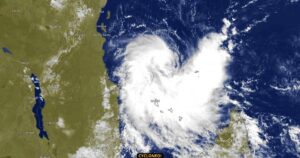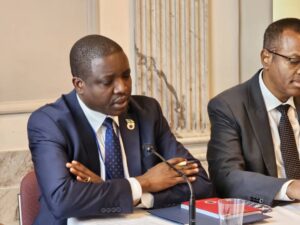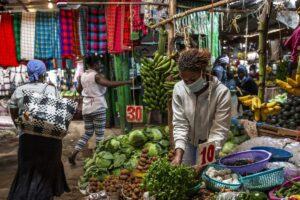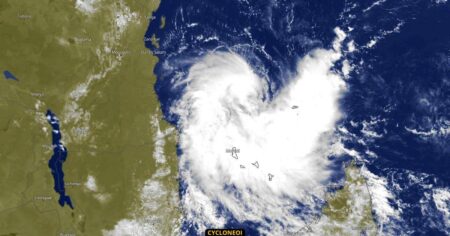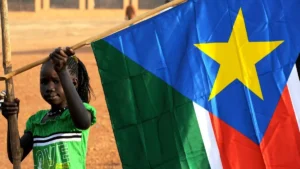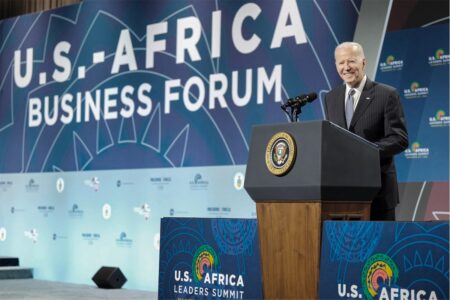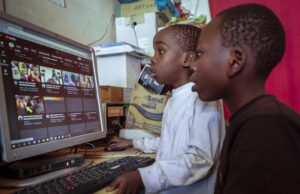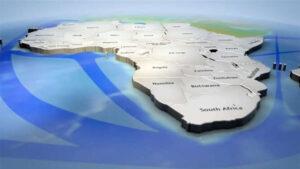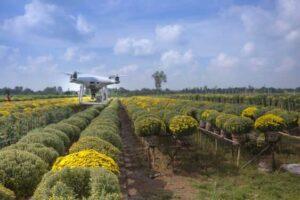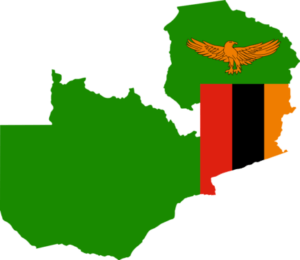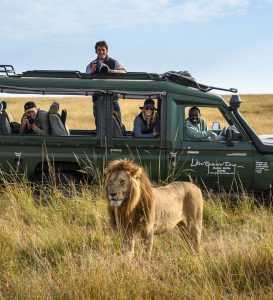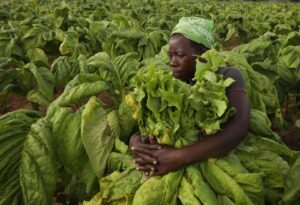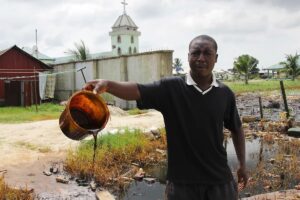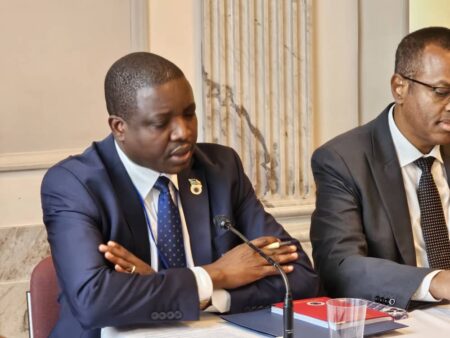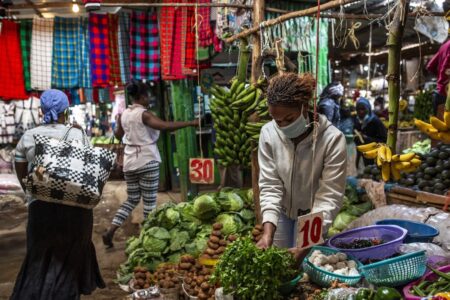- Kenya, Tanzania braces for torrential floods as Cyclone Hidaya approaches
- EAC monetary affairs committee to discuss single currency progress in Juba talks
- Transport and food prices drive down Kenya’s inflation to 5% in April
- Payment for ransomware attacks increase by 500 per cent in one year
- History beckons as push for Kenya’s President Ruto to address US Congress gathers pace
- IMF’s Sub-Saharan Africa economic forecast shows 1.2 percent GDP growth
- The US Congress proposes extending Agoa to 2041, covering all African countries
- Millions at risk of famine as fuel tax row halts UN aid operations in South Sudan
Africa
- Kenya and Tanzania, already reeling from nature’s fury, now confront the looming threat of Cyclone Hidaya.
- Cyclone Hidaya’s trajectory places the eastern coast of Tanzania squarely in its crosshairs as neighbouring Kenya braces for floods.
- The relentless deluge gripping East Africa finds its origins in the El Nino weather pattern.
Millions of people in Tanzania and Kenya are on edge as Cyclone Hidaya, a formidable tempest, barrels toward the region, exacerbating the havoc wrought by ongoing heavy downpours and catastrophic floods that have claimed hundreds of lives across East Africa.
Kenya and Tanzania, already reeling from nature’s fury, now confront the looming threat of a cyclone poised to unleash further devastation, with forecasts predicting a grim landfall later on Friday, May 3rd.
At the moment, Cyclone Hidaya’s trajectory places the eastern coast of Tanzania squarely in its crosshairs, with fears mounting over its potential impact on neighbouring Kenya. As …
- US Congress members ask Speaker Mike Johnson to invite President Ruto to address the assembly.
- President Ruto will be visiting the US on May 23 to mark 60 years of US-Kenya diplomatic ties.
- If invited, President Ruto would become the first Kenyan Head of State to address a joint session of US Congress.
In a historic plan highlighting the deepening ties between the United States and Kenya, House Foreign Affairs Committee chairman Michael McCaul (Republican – Texas) and Ranking Member Gregory Meeks (Democrat – New York) have jointly sent a letter to Speaker of the House Mike Johnson (Republican – Los Angeles, asking him to extend a formal invitation to President William Ruto of Kenya to address a joint session of Congress during his upcoming visit to the US, slated later in May.
“This year, we are celebrating the historic 60-year anniversary of the U.S.-Kenya diplomatic relationship. Such an invitation …
- The IMF has identified South Sudan, Burundi, and the DRC as East African Community member states poised for significant economic growth in the 2024–2025 period.
- GDP growth in Burundi is projected to increase from 4.3 to 5.4 percent and in the DRC from 4.7 to 5.7%.
- Kenya leads regionally with a projected GDP of $104 billion, ranking 7th overall among the continent’s largest economies.
The economic outlook for East African Community member states South Sudan, Burundi, and the Democratic Republic of the Congo (DRC) is poised for significant economic growth in the 2024–2025 period. This prognosis by the International Monetary Fund (IMF) comes despite these nations grappling with conflicts, marking them as among the most fragile in the region.
In its latest regional economic outlook report for Sub-Saharan Africa, the IMF forecasts a noteworthy 1.2 percent gross domestic product (GDP) growth for South Sudan, from 5.6 to 6.8 percent, despite …
The African Continental Free Trade Area (AfCFTA) is a free trade area which was founded in 2018, has seen the agreement take effect in January this year.
AfCFTA was created by the African Continental Free Trade Agreement among 54 of the 55 African Union nations. Now Kenyan manufacturers have urged government and relevant agencies to urgently address gaps in trade facilitation following the commencement of trade under the Africa Continental Free Trade Area (AfCFTA).
This was during a webinar on the status of implementation of AfCFTA, hosted by Kenya Association of Manufacturers (KAM) in partnership with National Trade Facilitation Agencies, including Kenya Revenue Authority (KRA), Kenya Bureau of Standards (KEBS) and Kenya Trade Agency (KenTrade).
Speaking during the session, KAM Chair, Mr Mucai Kunyiha, recognized the challenges and opportunities in AfCFTA.
According to the world bank, the AfCFTA presents a major opportunity for African countries to bring 30 million people …
The rise of digital technology presents a myriad of new inventions and conveniences and changes how people interact, communicate, and do business.
The immense benefits of technology carry with them cybersecurity risks. Given the complex and sometimes obscure nature of cyber threats, they are usually difficult to comprehend, identify and control.
Issues of outright theft, hacking, piracy, identity theft, and information misappropriation, among other cyber-related activities, come to the fore when it comes to cyber risks. In addition, national security risks exist in the digital space that poses a significant threat.
According to consulting firm Ovumone, it is estimated that the end of 2022 will see over a billion people having access to the internet. The rising internet access and improved digital usage open up the continent to increased online criminal activity.
…“Cybercrime is shifting towards emerging economies. This is where the cybercriminals believe the low-hanging fruit
The agricultural sector is considered one of the most critical industries for the African continent due to its economic potential. There has been significant growth in the past two decades leading to a level of production three times higher than before, and the sector is projected to become a US$1trillion industry in sub-Saharan Africa by 2030. However, despite this increase, the African continent is still a net importer of agricultural commodities to meet its population’s basic food needs.
Nearly 600 million hectares of uncultivated arable land is in Africa; this shows that there is a lot of untapped potential in African Agribusiness.
Boosting Agriculture Through Technology
The application of technological innovations in Agribusiness is vital in sustainably boosting productivity, increasing profits, and ensuring food security in the continent and beyond.
Mobile Phones
The foremost benefit of using mobile phones is as a platform for exchanging information through calls, SMS, or …
Through Zambia Consolidated Copper Mines Limited (ZCCM), the Zambian government will assume ownership in Mopani Copper Mines with a 73% stake. ZCCM takes over from Switzerland based Glencore mining company. The agreement entails the Zambian government, through ZCCM, taking over $1.5 billion in debt.
The deal further adds to an already cumbersome debt crisis. Zambia has already defaulted on debt obligations. A worsening debt crisis coupled with a pandemic has led the country to a precarious debt situation. The country became the first African nation to default on debt in the pandemic period, stoking fears that there could be a ripple effect of defaults across the continent.
As part of the agreement, ZCCM will pay Glencore creditors from Mopani Mine’s revenue. Initially, a payout of 3% of income will be paid up to 2023. After which revenue payouts will rise to 10 -17.5%.
The deal also stipulates a quarterly interest …
The African Union agenda 2063 is on course. After some delays due to covid, the African continental free trade area has become a reality. As part of the free trade area, the African Union passport will be availed this year. The passport launched in 2016 had been available only for diplomats and AU officials. It will now be rolled out to ordinary citizens of the African Union.
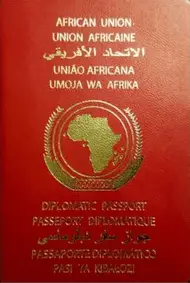
What will an African Passport mean?
The rationale for the passport is for African citizens to be able to cross all borders on African soil without a visa. The passport will facilitate easier movement for people to ease trade relations.
As African countries strengthen ties and seek to reap strength in numbers, the passport will spell an easier transition into seamless trade on the continent.
Modelled along the lines of the European Union passport, the passport will be biometric to prevent fraud and …
Better prepare East Africa: desert locust threat is not over
By Kawira Mutisya
The Food and Agriculture Organization (FAO) is seeking funding to continue with its fight against desert locusts in Eastern African countries affected by the menace.
Ethiopia, Kenya, Somalia and Sudan continue facing a threat from the desert locusts. According to a statement from FAO, action to control unprecedented desert locust infestations in the Horn of Africa last year has succeeded in protecting crops and livelihoods. The UN agency is now seeking $38 million funding to sustain operations against new incursions and continue work in these countries.
FAO says that this is urgent because without this support, the 28 aircraft that patrol the skies to spot and spray swarms could be grounded as early as March.
In the latest desert locust invasion update by FAO, swarms continue to invade the Horn of …
